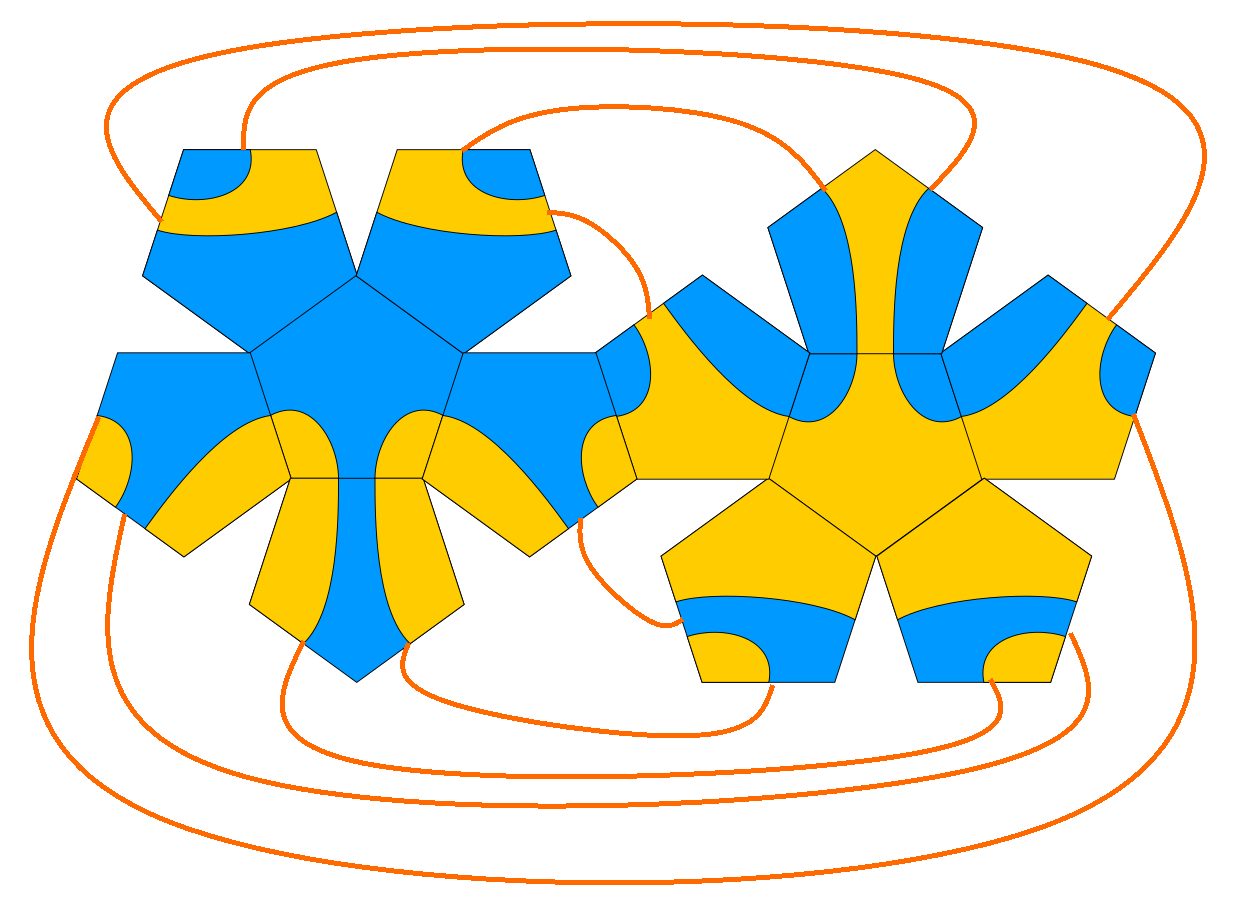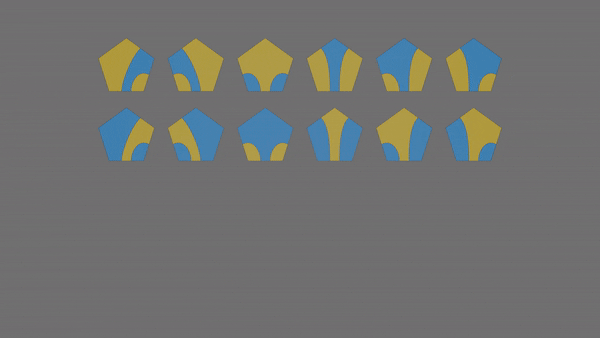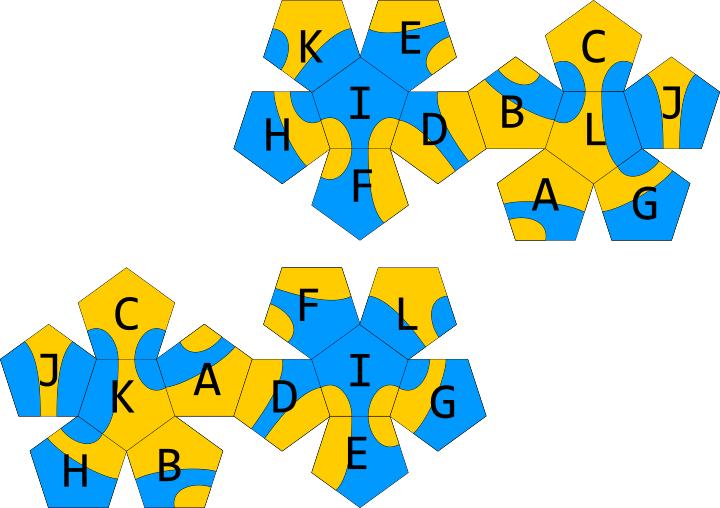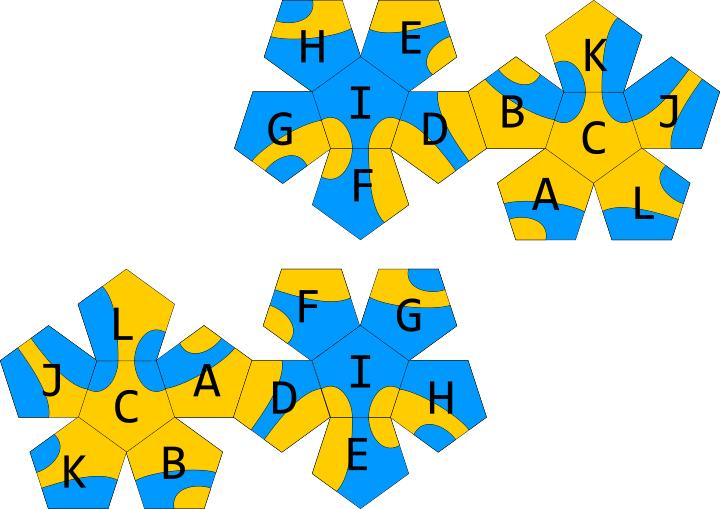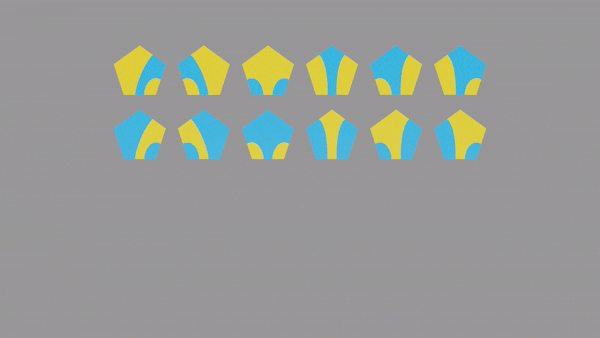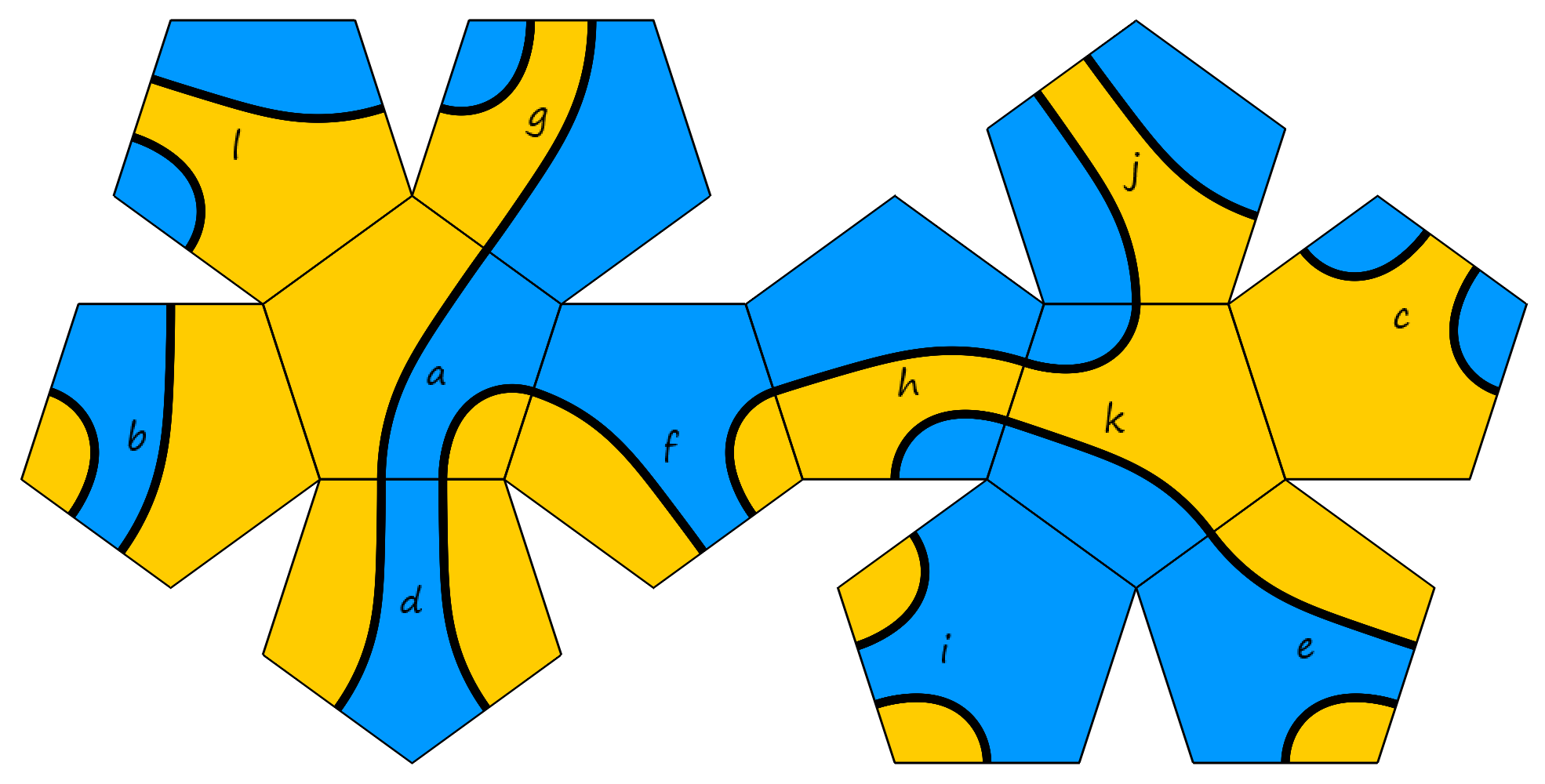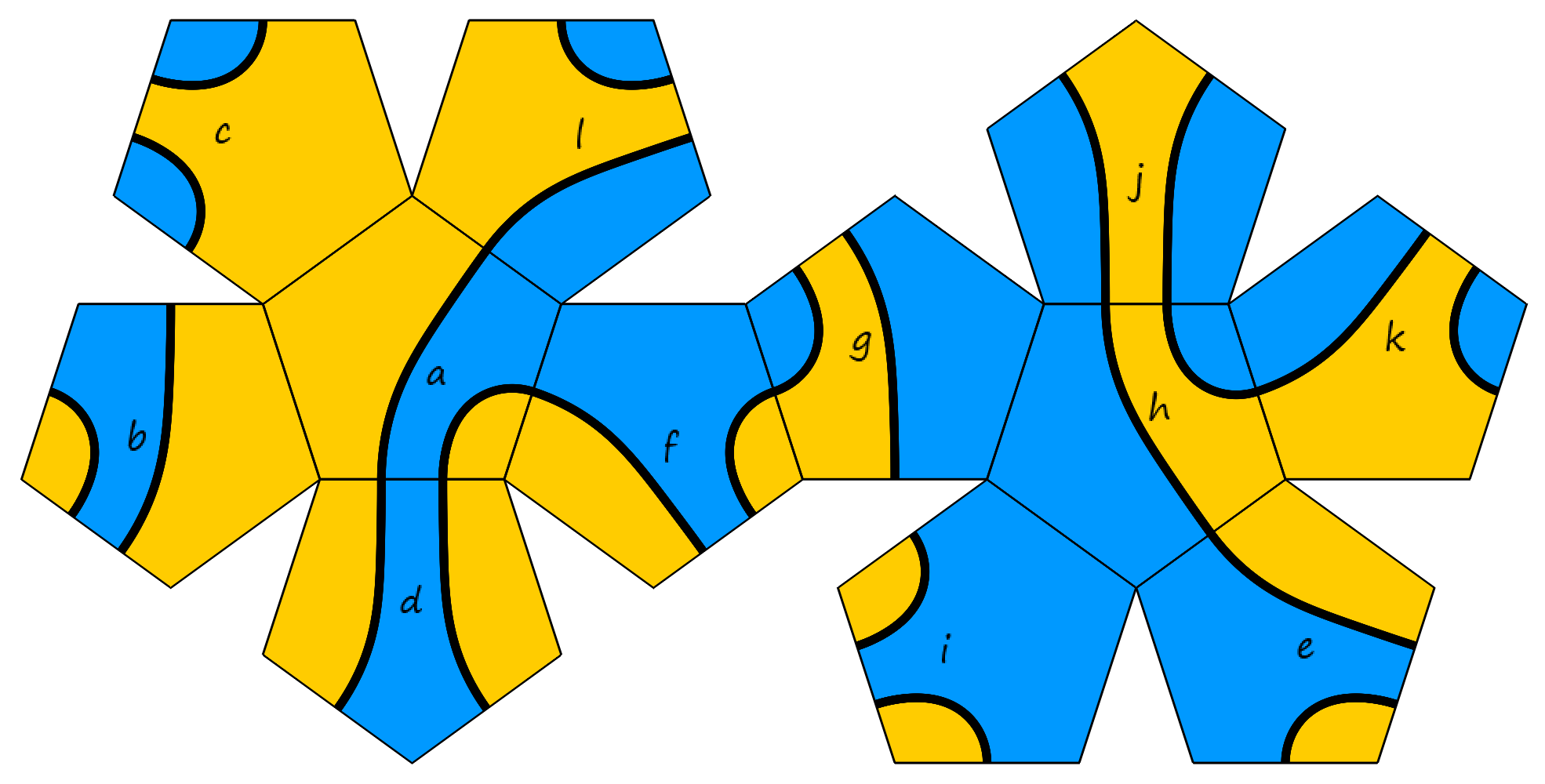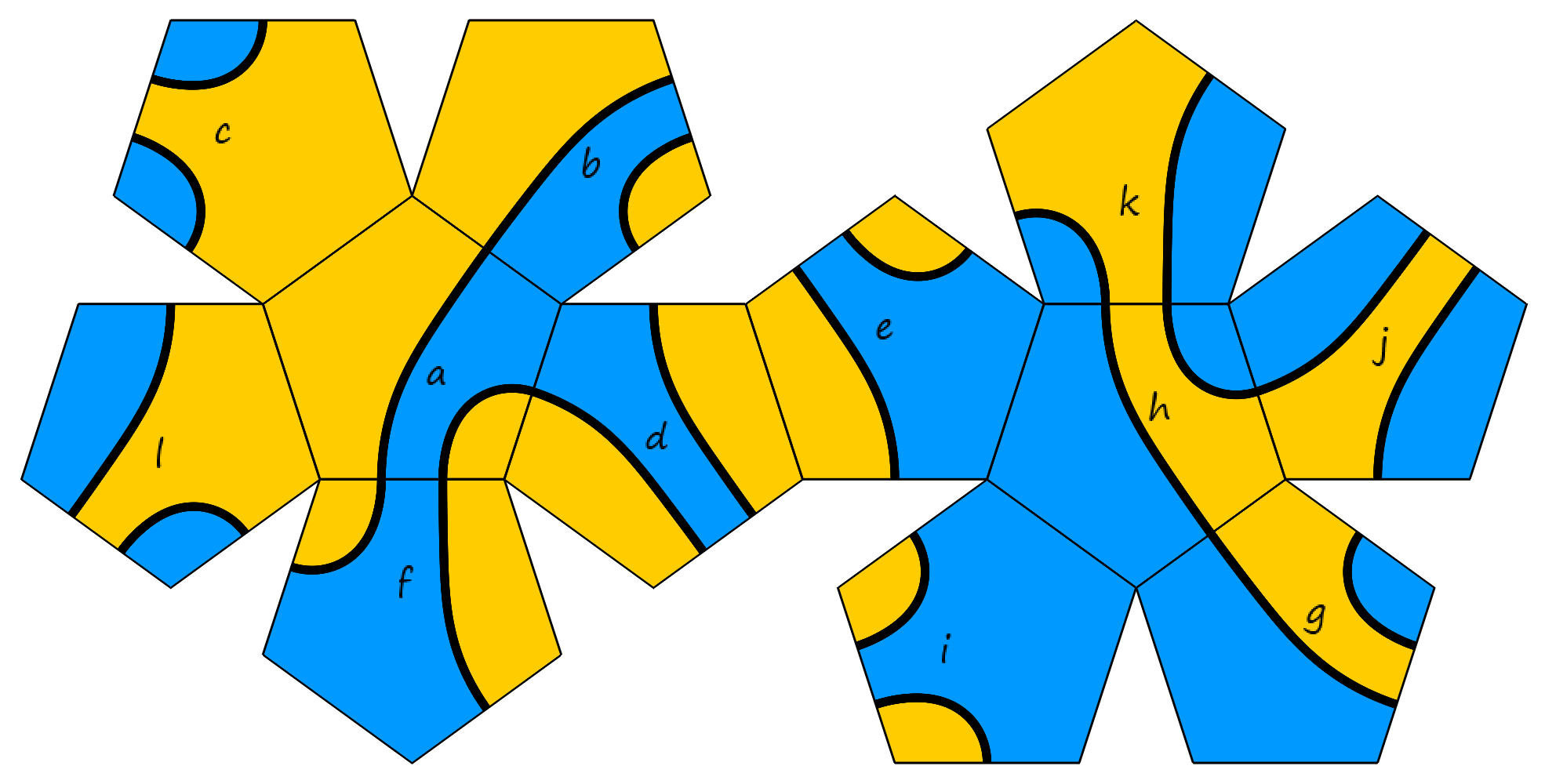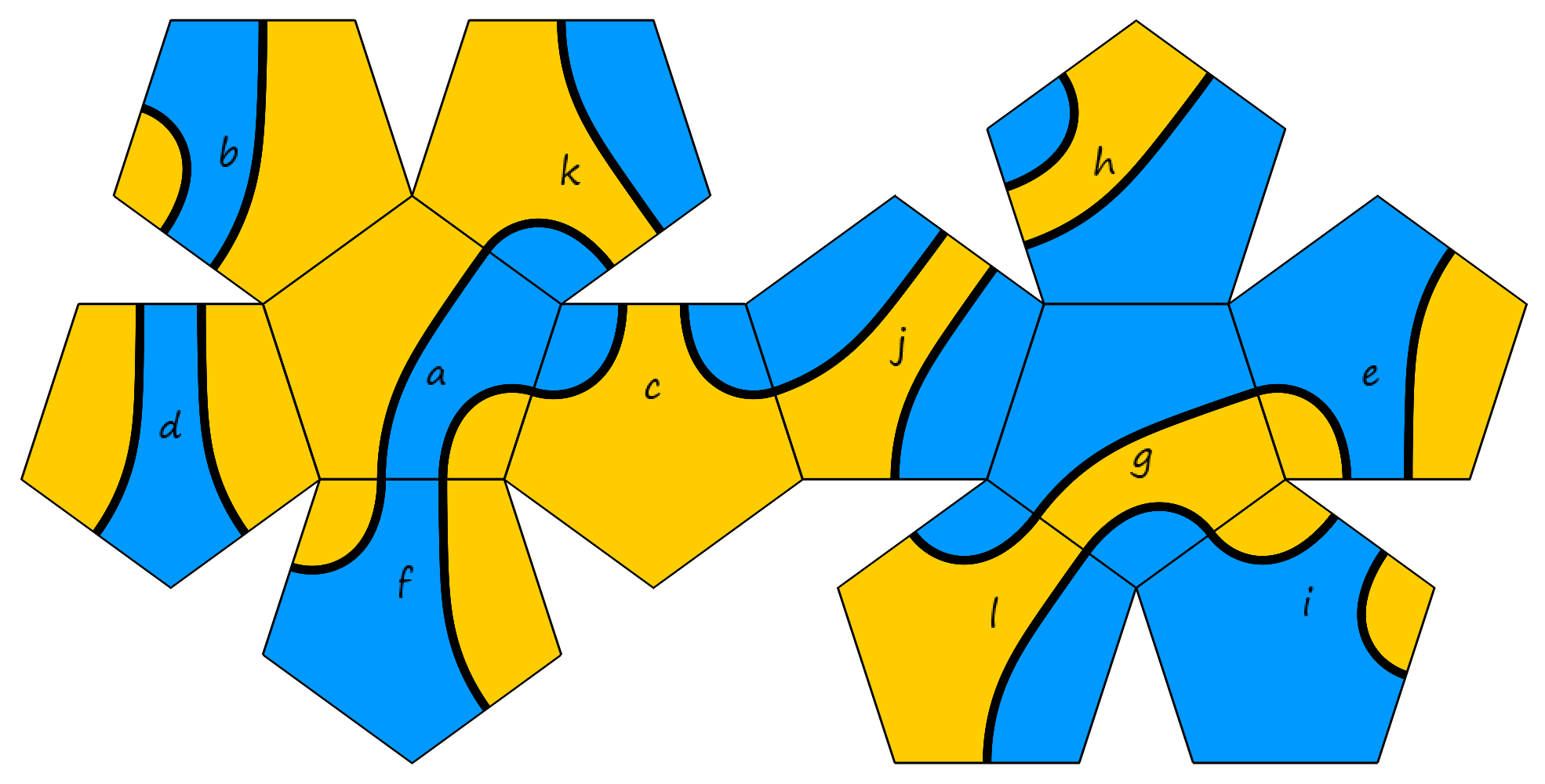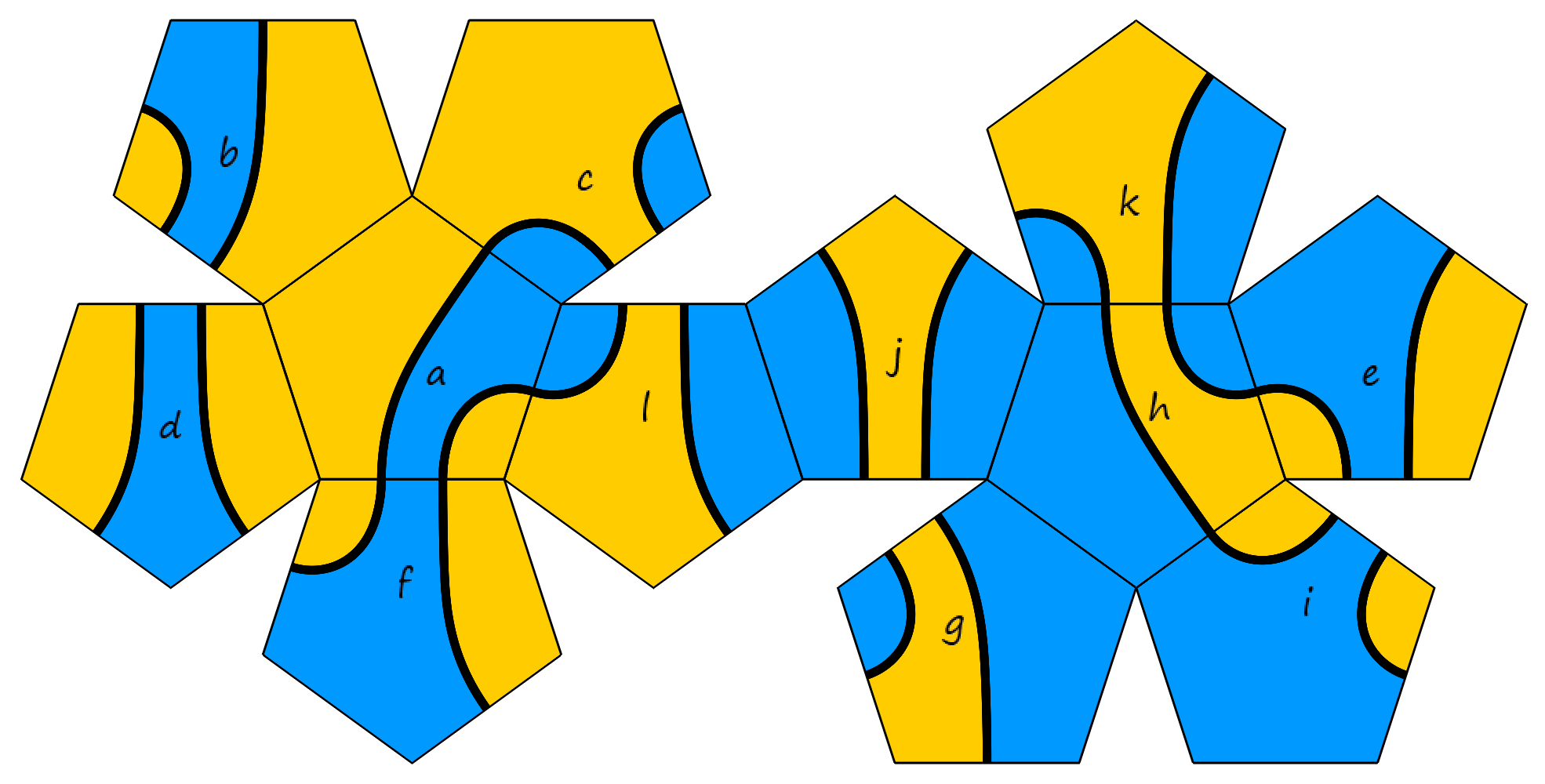Designing the puzzle took much more effort than solving it. While the mirror symmetrical solution can be found manually, for a complete survey a computer aided search is necessary. This can be done quite easily using a backtracking algorithm and the 5 "raw" solutions are found within seconds. I think the details of my program are not very interesting and there are surely other approaches which also solve the problem.
Up to rotation/reflection there are 3 essentially different solutions. This was pointed out in detail in the solution of DqwertyC. The exchange of the colors blue <-> yellow is an operation which can be described in mathematical terms as an antisymmetry. All three solutions have beautiful properties concerning antisymmetry which can be seen best if you build the models manually. The main goal of my answer is to invite you to build these models. If you print each net half fitting on a DIN A4 page the edge length is about 5 cm which is quite handy. The resolution of the pictures is quite high, you can right click and save them.
There are essentially only two(!) different types of nets of a dodecaedron half you need to build all three solutions. Lets start with the symmetrical solution. One half net looks like this
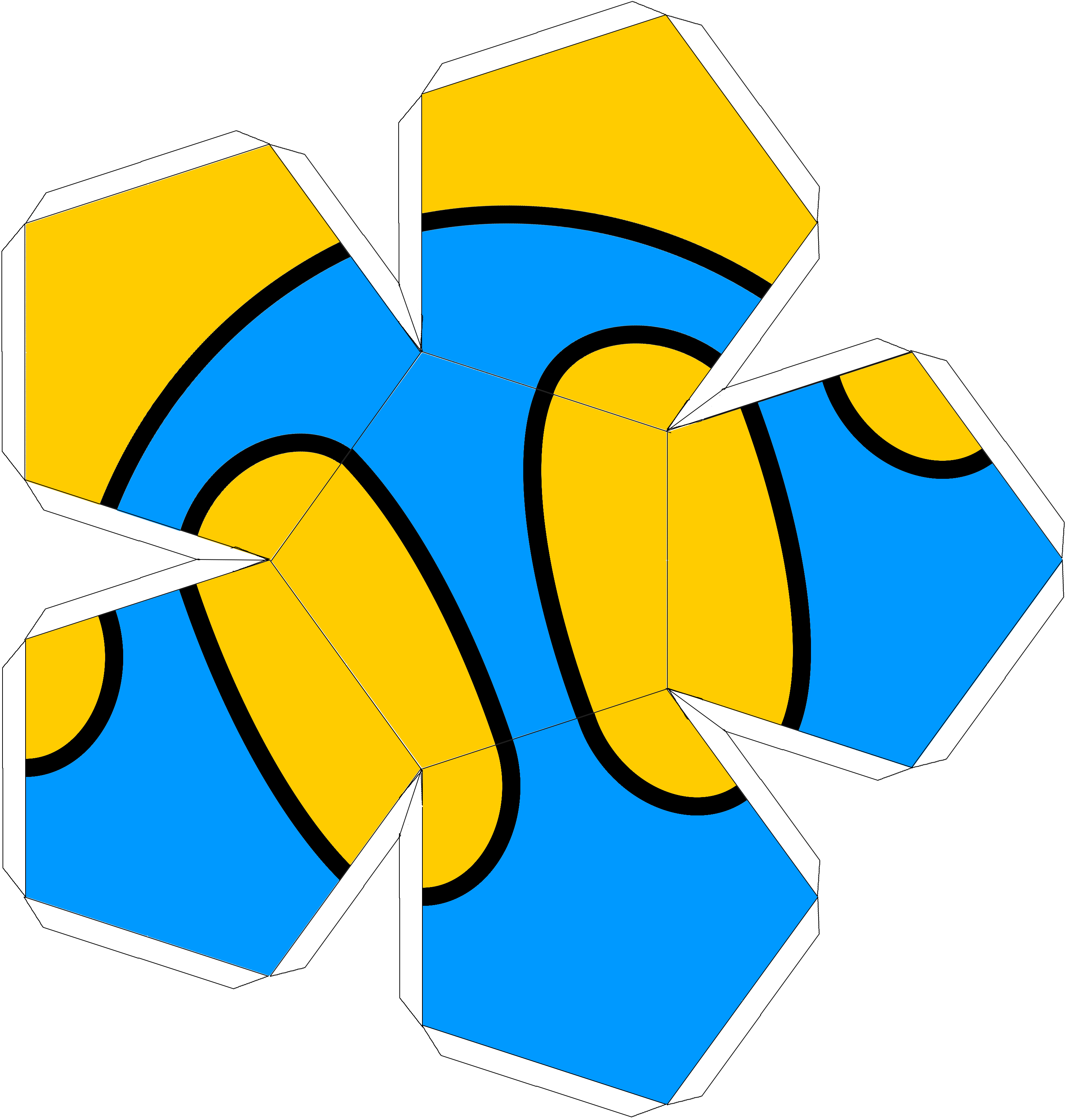
and the other half is just the same with the antisymmetry applied
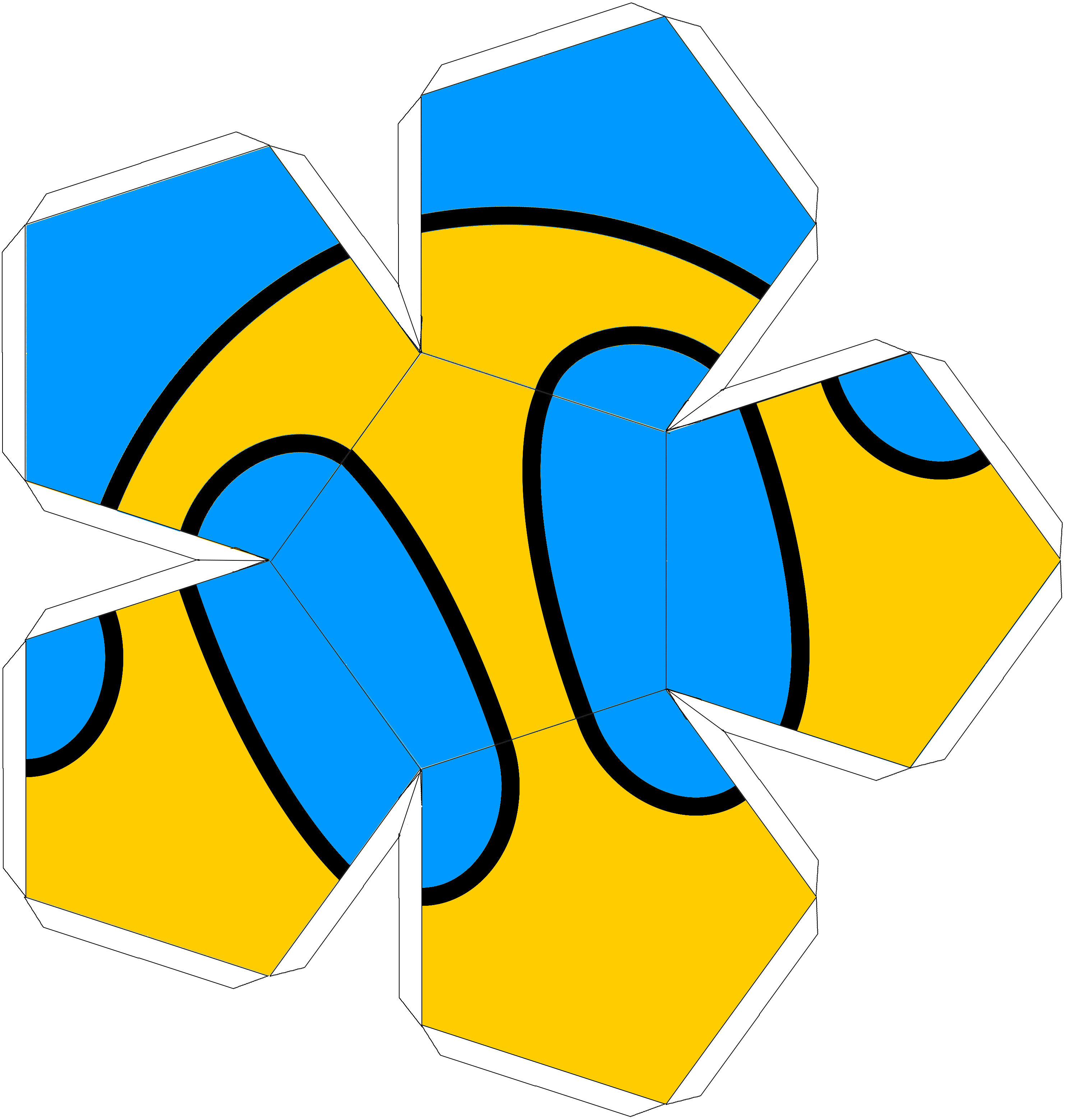
The first half of both the two other asymmetrical solutions can be made identical and look like this
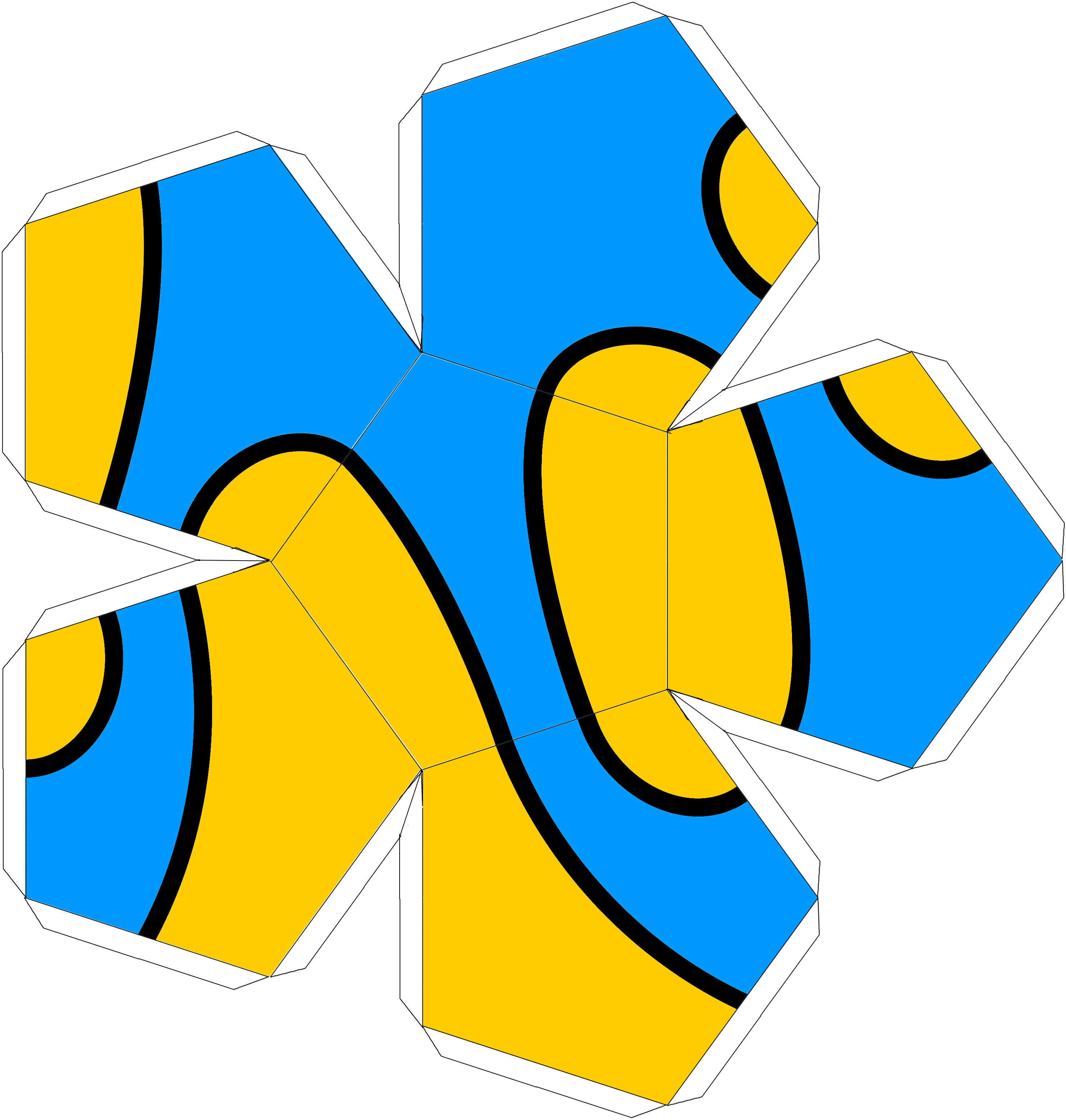
The second half of the first asymmetrical solution again is just the antisymmetry applied to the first half:
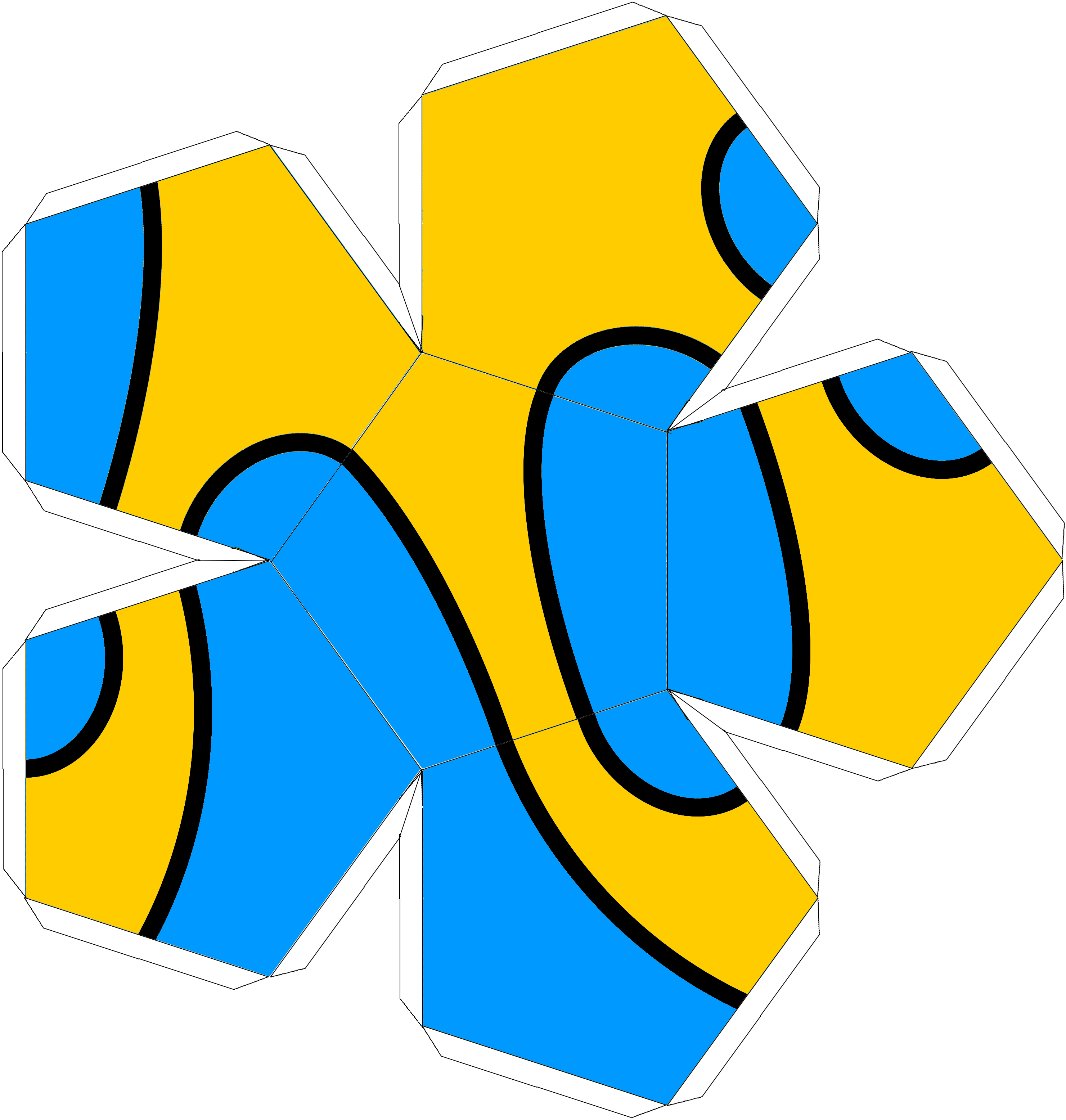
When you build the model you can find a unique twofold symmetry axis such that that rotation about this axis just exchanges all colors. In other words rotating and applying the antisymmetry leaves the dodecaehdron unchanged.
The second half of the second asymmetrical solution is just the mirror image of the second half of the first asymmetrical solution directly above.
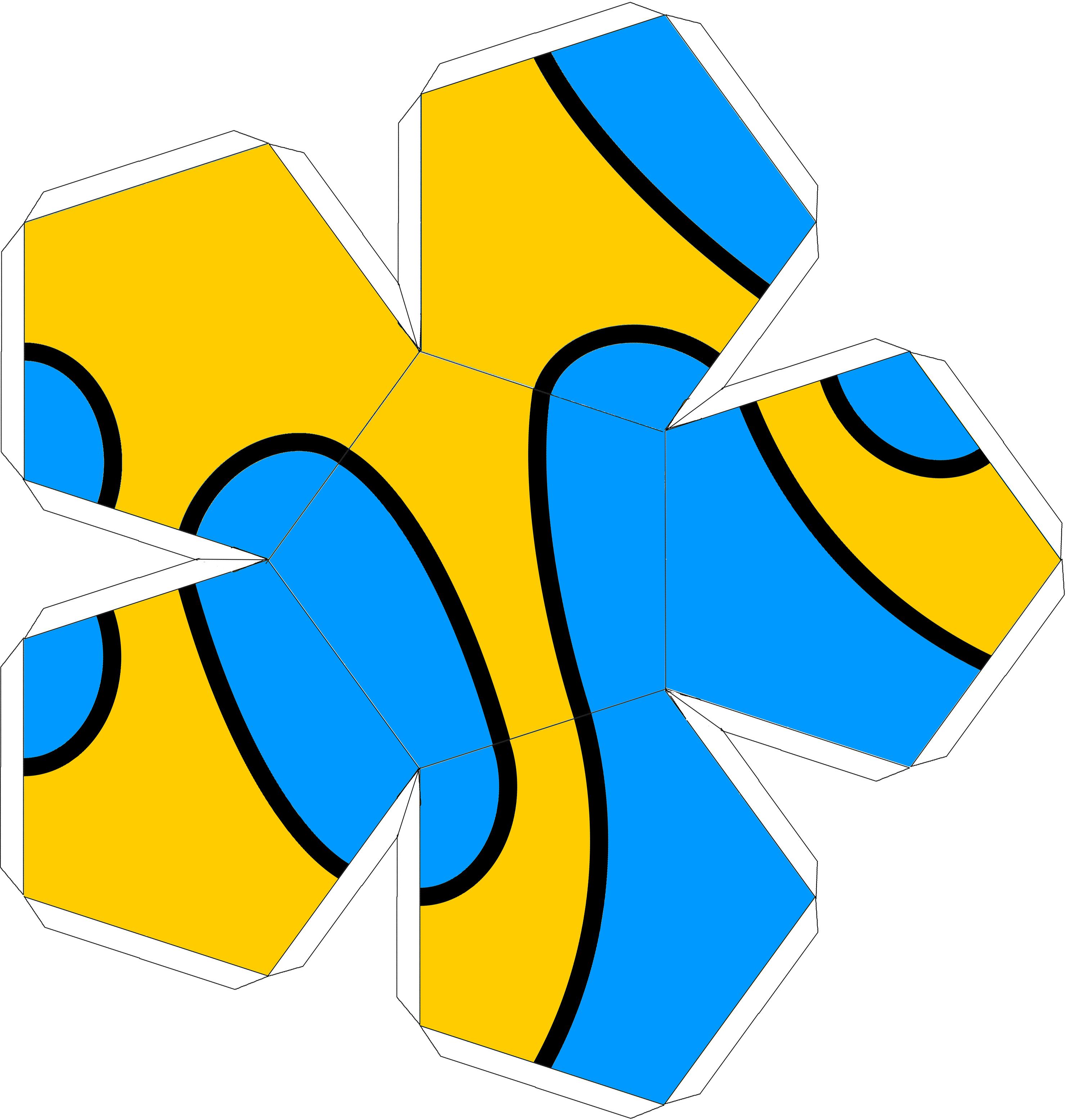
When you build the model you can see that a point reflection at the center of the dodecahedron has the same effect as exchanging the colors. In other words applying the point reflection and the antisymmetry together leaves the dodecahedron unchanged.




